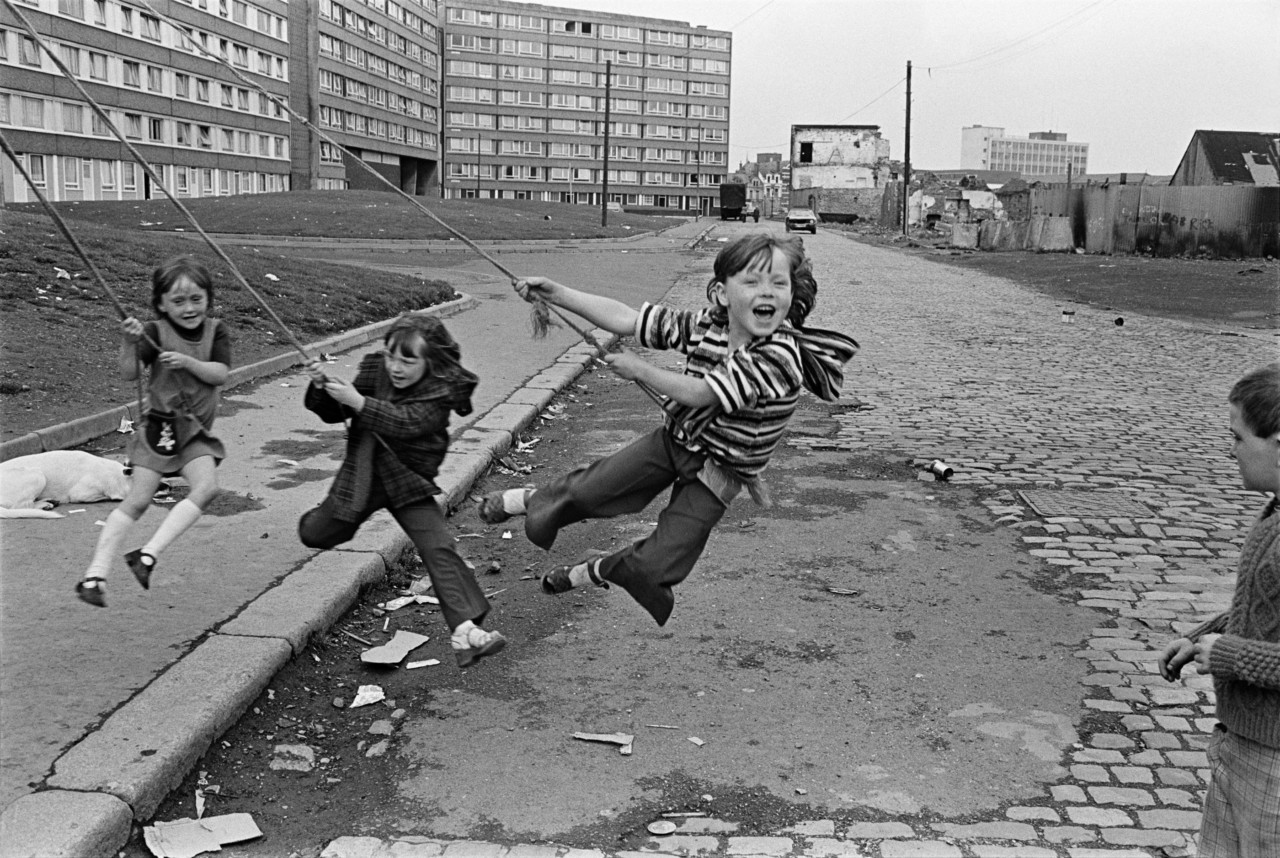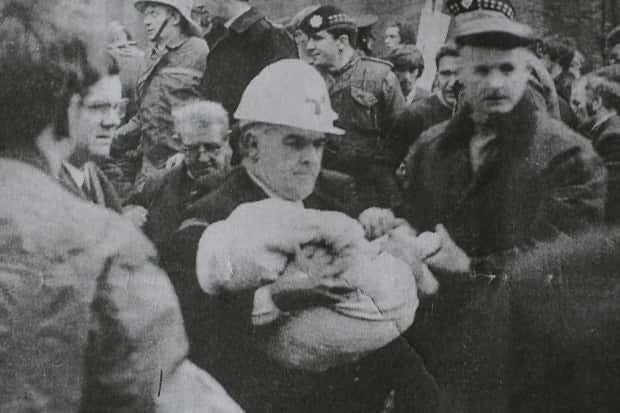Image #6: Chris Steele-Perkins (English) Girls swing from a lamp post outside Divis Flats, West Belfast, 1978

Chris Steele Perkins came to Belfast to shoot the poverty of the United Kingdom inner city poverty. As a photographer from outside Northern Ireland, he had the privilege of safely creating opinions on the situation in Northern Ireland. He saw the catholic community as the underdogs and made the decision to work with this particular group. This photo showcases young catholic girls playing in their neighborhood of West Belfast. In contrast to other images of children in The Troubles, this photo shows joy and resilience in the eyes of Steele Perkins.
To him, the protestant case was unsustainable. While he saw the atrocities by the IRA and splinter groups, he still felt for the republican side. This stands in contrast to the viewpoints of Northern Irish photographers who saw the evidence of violence in their photos as a strong distrust in the paramilitaries and hoped to use their photography as a way to decrease paramilitary support.
Steele Perkins’ work showed the era of The Troubles as something other than just violence. This admirably gives some humanity to a society that the English have otherwise rejected. However it is differentiated from the goals of Northern Irish photographers to showcase the struggles and pain of the nation.
Image #5: Alan Lewis (Northern Irish) Leading ambulance man Bob Scott removes the body of the youngest victim of the Balmoral Furniture Bombing from the rubble, Belfast, 1971

In 1971, the Provisional IRA bombed a Furniture Showroom in Belfast. Alan Lewis was one of the photographers on scene during this event. He witnessed a baby being carried out of the wreckage and froze. After that moment he vowed he wouldn’t freeze next time. A few moments later another child was carried out of the wreckage and he captured this photo.
The shock and sadness he felt in seeing a young child killed by such violence is felt in seeing this image. In response to seeing the death of these young members of the community, Lewis hoped that capturing photos such as these would prevent more people from joining paramilitary organizations. This photo shows the pain that only one who has seen this violence with their own eyes can experience. This is one of the examples of Northern Irish photographers showing violence as it unfolds. There is noting staged about this photography but it is something that can only be fully felt by an individual who has experienced this firsthand.
In reminiscing on this time Lewis said he felt proud of the work he did in capturing the history of this time but has since chosen to lean away from those images. Like many other photographers of the time he noted the impact that that has on anyone who must witness tragedies such as these.
